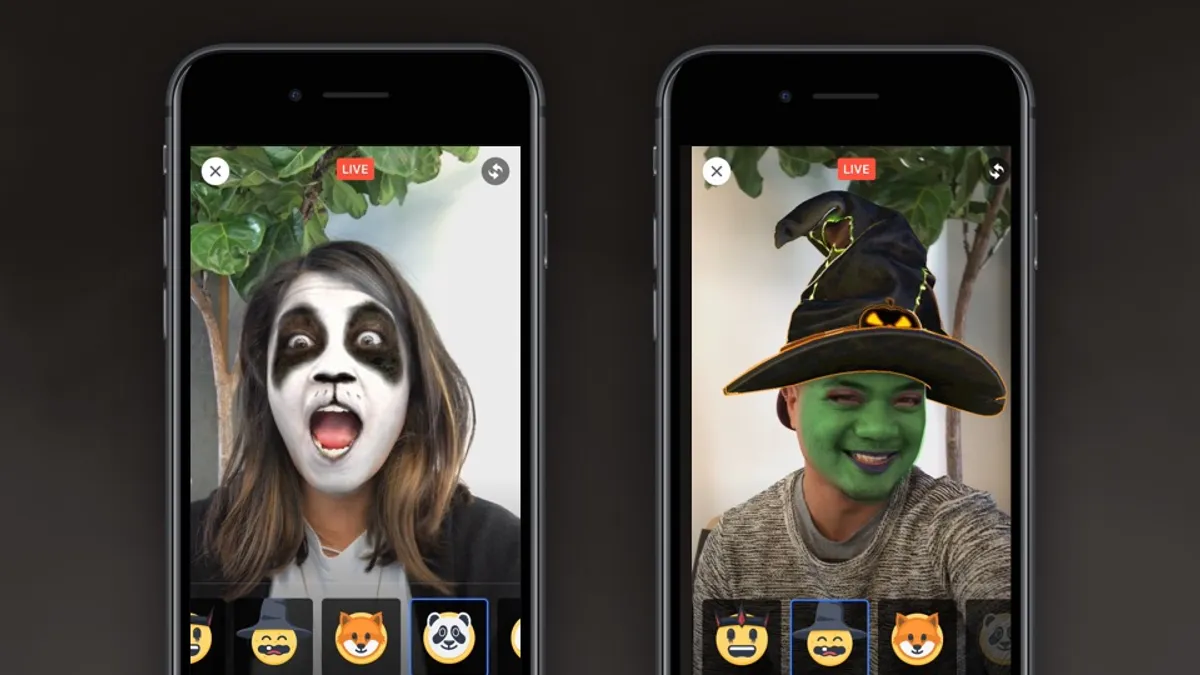Dive Brief:
- Recode reported Friday that Facebook is trying out a new messaging product in Ireland that looks eerily familiar. The feature allows users to share video messages that can be augmented with virtual filters and will disappear 24 hours after sending — but, no, it's not called Snapchat.
-
The Snapchat doppelganger will be integrated into Facebook’s flagship app, which has around 1.7 billion users, and will have its own message inbox on the core platform, per Recode.
- Facebook also announced “Masks” for Facebook Live in a blog post late last week, a new tool that overlays virtual mask filters on streaming video, also similar to the way Snapchat does. The first batch of masks are Halloween-themed, and might be indicative of what a larger Snap-esque product will look like.
- UPDATE: TechCrunch reports today that Facebook made an unsuccessful bid this summer to buy Snow, a Korean Snapchat clone. Facebook also offered to buy Snapchat three years ago for $3 billion but was turned down.
Dive Insight:
Having attained a massive active user base of nearly 2 billion, Facebook is now focusing on convincing those users to stay within its own walled garden of products, copy-catting everything from Slack to Twitter in the process. The introduction of a Snap-esque service then comes as little surprise, and might also be a hook for millennials and Gen Z-ers whose engagement with Facebook has waned.
While Snap’s young-skewing audience is slim compared to Facebook’s at the moment, eMarketer forecasts the former's user base will grow 27% this year, a trend that will likely continue into 2017 as Snap Inc., Snapchat’s parent company, preps an IPO potentially worth north of $30 billion. That suggests Snapchat’s value will be far more tangible in the near future, and the company has recently introduced marketing tools to attract more brands, including three ad targeting options.
But changes to Snapchat’s formula are frustrating marketers, especially the removal of auto advance stories, which has dropped average ad viewership by 15%, according to third party estimates. Facebook’s own measurements are far from precise, with video in particular being a point of controversy.
Just a month ago, Publicis Media found Facebook had inflated viewership metrics by anywhere from 60 to 80% for the past two years, so both social platforms have a ways to go in figuring out best measurement and monetiziation practices.















